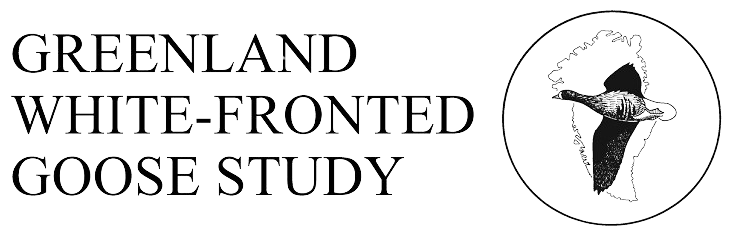History
As described for the last resort, few historical data exist to enlighten the changes in abundance and distribution of White-fronted Geese using this part of South Uist, since most authors considered the Outer Hebrides as one unit. White-fronted Geese were considered rare in the late 1800s, but Berry (1939) cites Harvie-Brown & Buckley (1888) in describing that they increased extraordinarily between 1883 and 1887 on South Uist. The fact that they arrived in mid October and left in April mark them out as coming from Greenland at that time. Much of these early accounts describe migration, frustratingly little detail is given to wintering birds. A-W (1963) reported up to 250 on the machair lands on the west coast and R&O (1979) implied that 300-400 were more regular numbers in the past. By comparison, the sum totals of birds at sites 47 and 48 in the last ten years have exceeded 150 in all but two years.
Status
Regional importance (part of R&O 45). There seems to have been a substantial decline in the numbers of whitefronts wintering on South Uist since the 1950s, when “up to 250 could still be found on the machair lands on the west coast”. However, since 1982/3, the Loch Bee flock has certainly increased, and indeed numbers have exceeded 100 in every year since 1996 but 2004 (when 99 were present!). Most extraordinary is that the Loch Bee group does seem to have better maintained its numbers over the monitored period to the very present. It is interesting to speculate whether in recent years this is in part due to amalgamation of the Benbecula and North Uist flocks at this resort. For whatever reason, the conservation status of this flock is far better than any of the others on the Outer Hebrides.
Maximum winter counts:
Breeding success: There are no consistent production data from this site.
Feeding sites and habitat: This flock forages widely, and is easy to lose in dead ground and extensive areas which are not visible from roads. Several observers over the years have commented on the difficulty of finding all the birds and of counting them accurately. The geese favour the eastern side of the Loch near Ardnamonie but feed mostly in the Kilaulay area, but will forage as far south as West Gerinish (NF766426) but also to NF774432. The flock grazes on the machair, extensive wet meadow, low intensity farmland and bog, with freshwater areas.
Roosting sites: Not known, there are abundant lochs around in the immediate vicinity. When disturbed during the day the geese tend to fly to the east side of Loch Bee which is doubtless the roost for this flock.
Habitat change: None known
Aircraft disturbance: None known
Hunting disturbance: Formerly a considerable problem with poachers in the 1980s and later, but still a great deal of shooting by the South Uist Estate makes these birds very nervous of people. There have been several new shooting butts constructed in the area in the 2000s and this causes addition disturbance over previous years both human and shooting disturbance.
Agricultural disturbance: Not known, there is much background agricultural disturbance, but it seems unlikely that this constitutes a problem at current levels. A low fence was erected along the length of the western shore of the loch in 2000/1.
Site safeguard: Loch Bee Machair is NCR SSSI, is part of the South Uist Machair and Lochs SPA and Ramsar Site.
SNH Natural Heritage Zones/Area: Coll, Tiree and the Western Isles.
Threats: Shot over by local crofters and the Army Gun Club. There has been a recent prosecution for the illegal shooting of a Whitefront.
References
Harvie-Brown, J. A. & Buckley, T.E. (1888) A Vertebrate fauna of the Outer Hebrides. Edinburgh.
